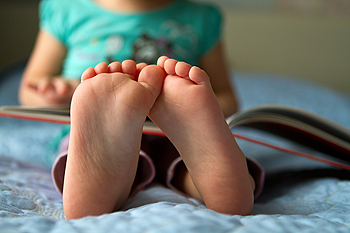 One of the first symptoms that is noticed in poor circulation is a numbing or tingling sensation that is felt in the feet. When the blood circulates properly, toxins are carried through the bloodstream for elimination. If the arteries are clogged, the blood may have difficulty moving freely through the body. There are several methods to improve poor circulation. Research has indicated that exercising regularly is beneficial in improving circulation, and this can include yoga, stretching, or walking. Additionally, this condition can be improved by incorporating foods into your diet such as fruits and vegetables. Many patients enjoy massages as an effective method to improve circulation. If you have poor circulation and would like information about how it affects the feet, please consult with a podiatrist.
One of the first symptoms that is noticed in poor circulation is a numbing or tingling sensation that is felt in the feet. When the blood circulates properly, toxins are carried through the bloodstream for elimination. If the arteries are clogged, the blood may have difficulty moving freely through the body. There are several methods to improve poor circulation. Research has indicated that exercising regularly is beneficial in improving circulation, and this can include yoga, stretching, or walking. Additionally, this condition can be improved by incorporating foods into your diet such as fruits and vegetables. Many patients enjoy massages as an effective method to improve circulation. If you have poor circulation and would like information about how it affects the feet, please consult with a podiatrist.
While poor circulation itself isn’t a condition; it is a symptom of another underlying health condition you may have. If you have any concerns with poor circulation in your feet contact one of our podiatrists of Westside Podiatry Center, LLP. Our doctors will treat your foot and ankle needs.
Poor Circulation in the Feet
Peripheral artery disease (PAD) can potentially lead to poor circulation in the lower extremities. PAD is a condition that causes the blood vessels and arteries to narrow. In a linked condition called atherosclerosis, the arteries stiffen up due to a buildup of plaque in the arteries and blood vessels. These two conditions can cause a decrease in the amount of blood that flows to your extremities, therefore resulting in pain.
Symptoms
Some of the most common symptoms of poor circulation are:
- Numbness
- Tingling
- Throbbing or stinging pain in limbs
- Pain
- Muscle Cramps
Treatment for poor circulation often depends on the underlying condition that causes it. Methods for treatment may include insulin for diabetes, special exercise programs, surgery for varicose veins, or compression socks for swollen legs.
As always, see a podiatrist as he or she will assist in finding a regimen that suits you. A podiatrist can also prescribe you any needed medication.
If you have any questions, please feel free to contact one of our offices located in Liverpool, Camillus, Skaneateles, Oswego, and Cicero, NY . We offer the newest diagnostic and treatment technologies for all your foot care needs.




